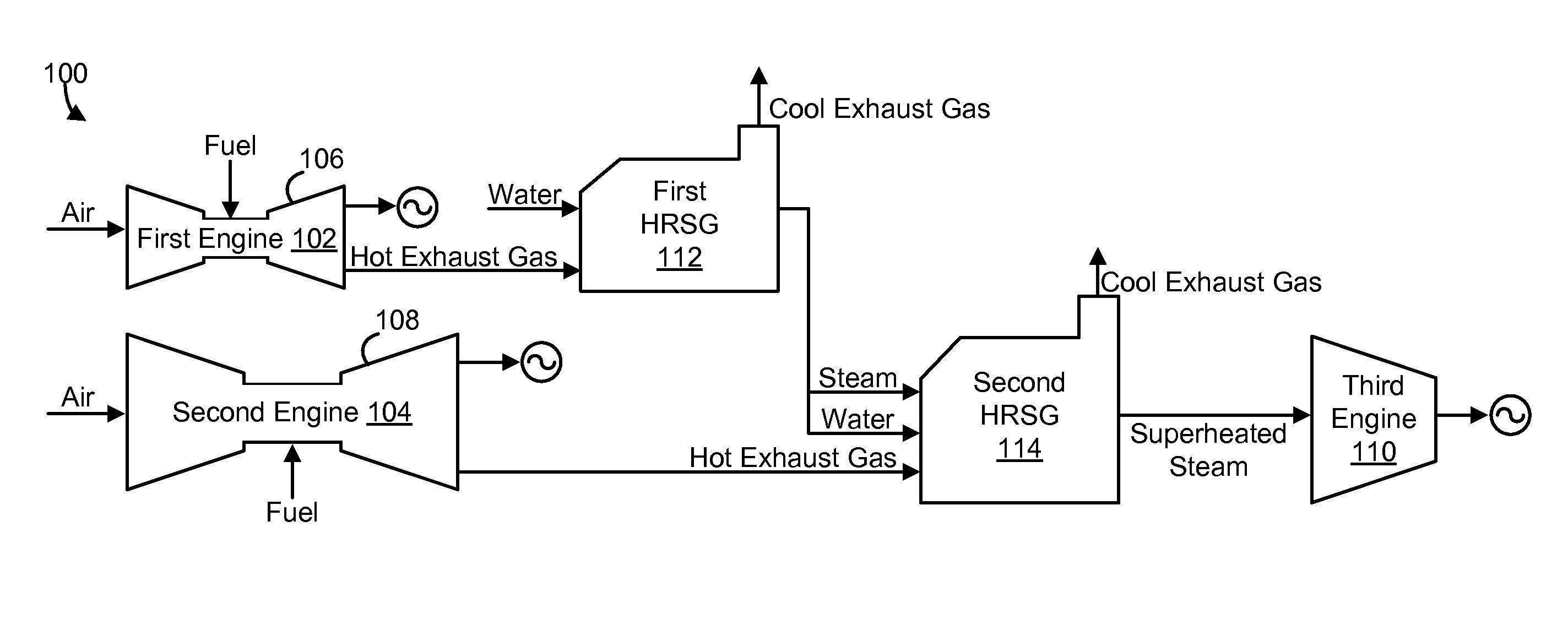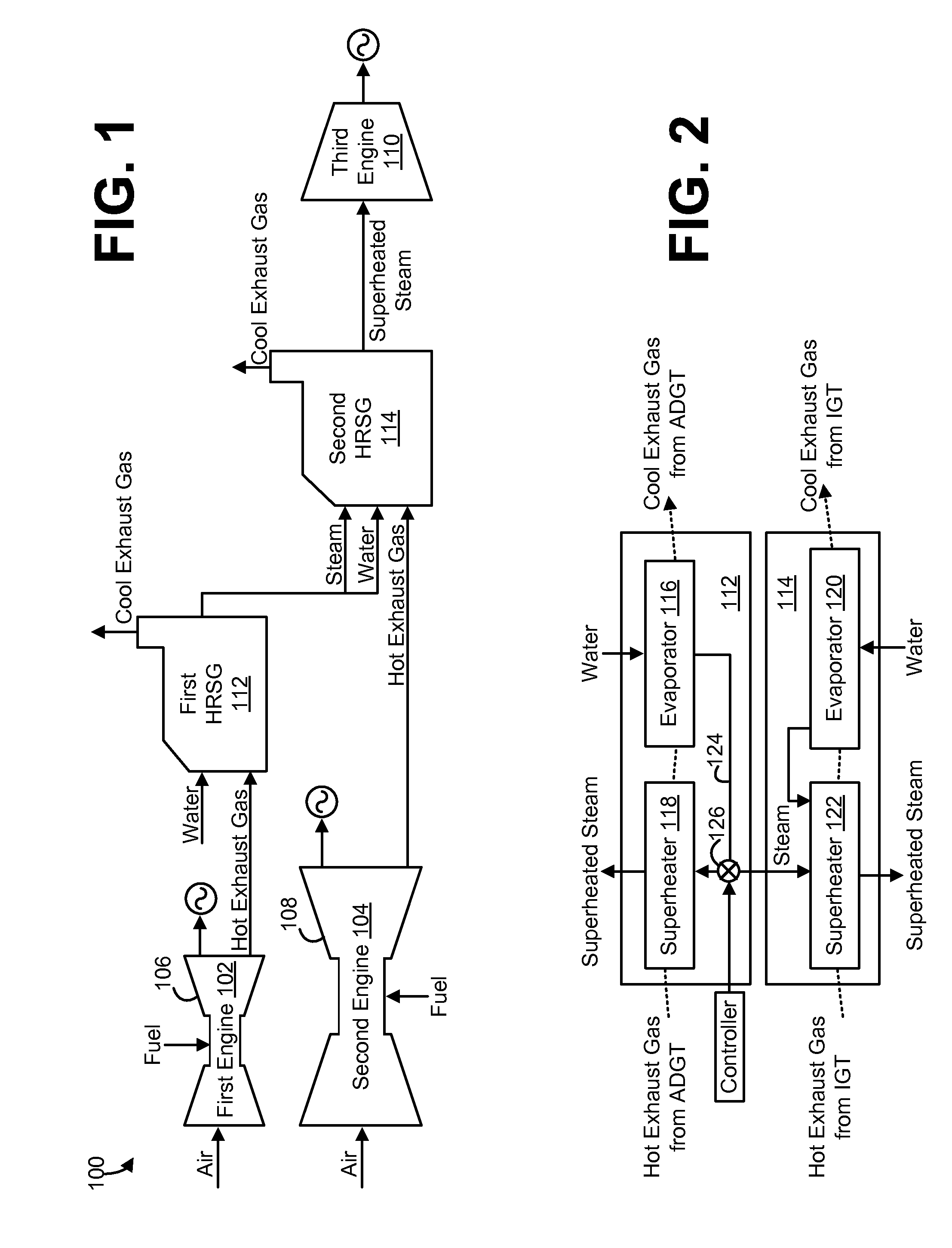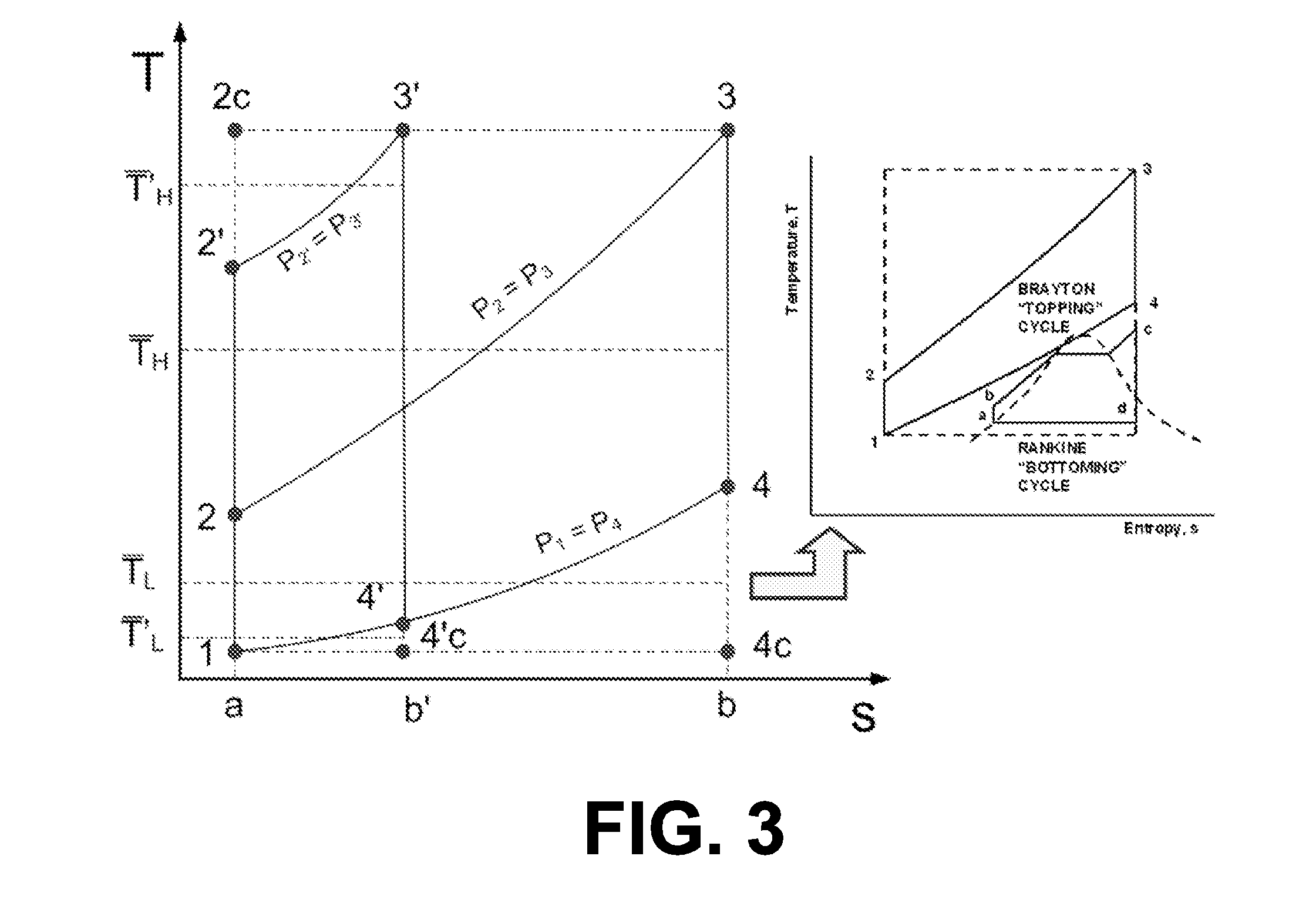Asymmetrical Combined Cycle Power Plant
a combined cycle and power plant technology, applied in the direction of machines/engines, mechanical equipment, transportation and packaging, etc., can solve the problems of less efficient and relatively more productive second engines than the first, and achieve the effect of less efficient and more productiv
- Summary
- Abstract
- Description
- Claims
- Application Information
AI Technical Summary
Benefits of technology
Problems solved by technology
Method used
Image
Examples
Embodiment Construction
[0010]Described below are embodiments of an asymmetrical combined cycle power plant that employs two different topping cycle engines in combination with a single bottoming cycle engine. The two topping cycle engines are different from each other in a manner that causes one of the topping cycle engines to be more productive but less efficient than the other topping cycle engine. The two topping cycle engines are thermodynamically coupled to the bottoming cycle engine by way of a heat recovery system. The heat recovery system relies more heavily on the less efficient topping cycle engine to feed the bottoming cycle engine, thereby increasing the efficiency of the overall power plant.
[0011]For the purposes of this disclosure, the term “topping cycle engine” generally refers to an engine within the combined cycle power plant that generates waste energy that is recaptured for use in another portion of the combined cycle power plant. The term “bottoming cycle engine” generally refers to a...
PUM
 Login to View More
Login to View More Abstract
Description
Claims
Application Information
 Login to View More
Login to View More - R&D
- Intellectual Property
- Life Sciences
- Materials
- Tech Scout
- Unparalleled Data Quality
- Higher Quality Content
- 60% Fewer Hallucinations
Browse by: Latest US Patents, China's latest patents, Technical Efficacy Thesaurus, Application Domain, Technology Topic, Popular Technical Reports.
© 2025 PatSnap. All rights reserved.Legal|Privacy policy|Modern Slavery Act Transparency Statement|Sitemap|About US| Contact US: help@patsnap.com



